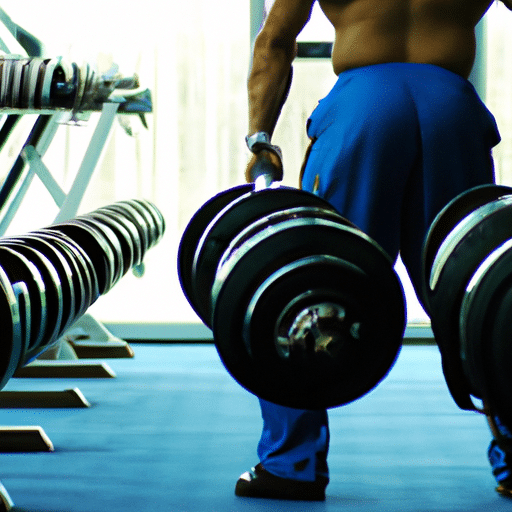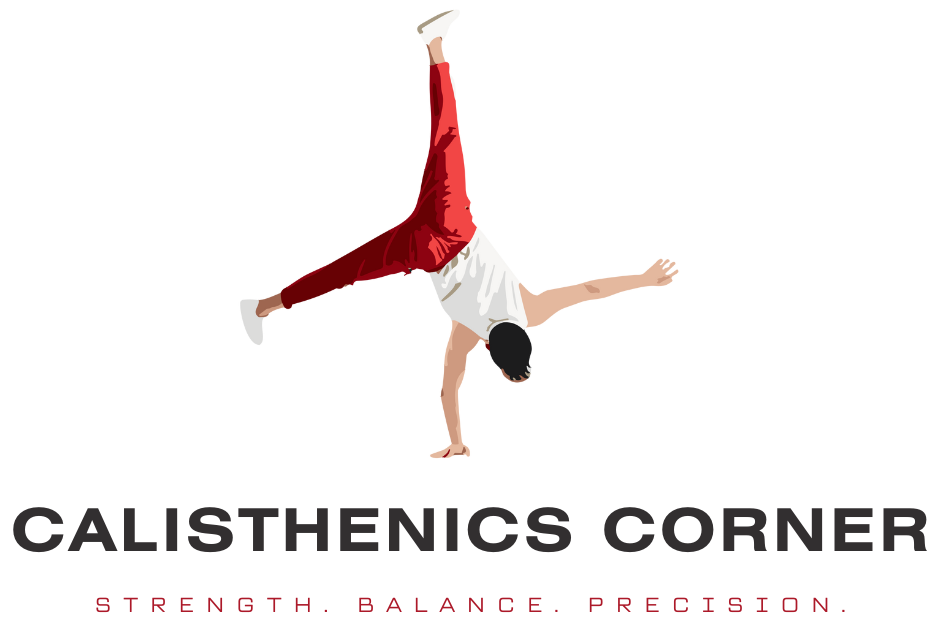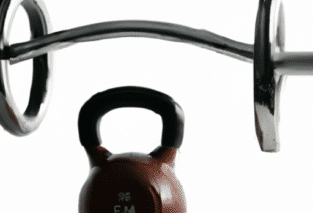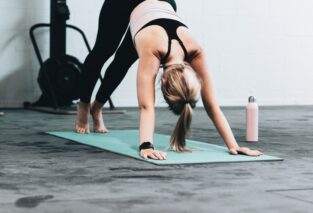If you’ve ever wondered whether you can combine calisthenics and weight lifting in your fitness routine, we have the answer for you. Many fitness enthusiasts find themselves torn between the two activities, unsure whether they can effectively incorporate both into their workouts. In this article, we will explore the compatibility of calisthenics and weightlifting, and provide guidance on how you can successfully combine these two popular forms of exercise to achieve your fitness goals.
Overview of Calisthenics and Weight Lifting
What is Calisthenics?
Calisthenics refers to a form of exercise that uses the weight of your own body as resistance to build strength and improve fitness. It involves a wide range of bodyweight exercises such as push-ups, pull-ups, squats, lunges, and planks. Calisthenics can be done with minimal or no equipment, making it accessible to anyone regardless of their fitness level or access to a gym.
What is Weight Lifting?
Weight lifting, also known as strength training or resistance training, involves using external weights such as dumbbells, barbells, or weight machines to build strength and increase muscle mass. Weightlifting exercises typically target specific muscle groups and involve movements such as bench presses, squats, deadlifts, and shoulder presses. It is commonly performed in a gym, but can also be done at home with the use of free weights or resistance bands.
Benefits of Calisthenics
One of the key benefits of calisthenics is that it can be done anywhere, without the need for expensive gym equipment. The exercises primarily focus on functional movements, which means they mimic movements you use in your everyday life. This can help improve your overall strength, mobility, and flexibility, making day-to-day activities easier and reducing the risk of injuries.
Calisthenics also promotes improved body control and increased muscle endurance. Since you are using your own body weight as resistance, it allows for natural and fluid movements, engaging multiple muscle groups simultaneously. This helps develop a more balanced physique and improves coordination and stability.
Benefits of Weight Lifting
Weight lifting, on the other hand, offers unique benefits that may not be fully achievable with calisthenics alone. By incorporating external weights, you can progressively overload your muscles, challenging them to adapt and grow stronger. This leads to increased muscle mass, improved bone density, and enhanced overall strength.
Weight lifting also has a positive impact on body composition, helping to decrease body fat and increase muscle definition. It can boost metabolism, leading to increased calorie burn both during and after your workouts. Additionally, weight lifting has been shown to have a positive effect on mental health, reducing stress and anxiety while improving mood and self-confidence.
Differences Between Calisthenics and Weight Lifting
Type of Exercises
The primary difference between calisthenics and weight lifting lies in the type of exercises performed. Calisthenics focuses on using body weight movements, while weight lifting utilizes external weights. Calisthenics exercises involve pushing, pulling, bending, and twisting your body in different ways to create resistance. Weight lifting exercises, on the other hand, involve lifting weights in a controlled manner to target specific muscle groups.
Equipment
Another significant distinction between calisthenics and weight lifting is the equipment used. Calisthenics can be performed with little to no equipment, making it easily accessible to anyone. Exercises like push-ups, lunges, and planks can be done at home or in a park using just your body weight. Weight lifting, on the other hand, typically requires access to a gym or home workout equipment such as dumbbells, barbells, or weight machines.
Muscle Activation
Calisthenics and weight lifting also differ in their impact on muscle activation. Calisthenics exercises often engage multiple muscle groups simultaneously, promoting functional movement patterns and overall body strength. Weight lifting, on the other hand, allows for more isolated muscle activation, targeting specific muscle groups to build strength and increase muscle size.
Resistance and Progression
When it comes to resistance and progression, calisthenics and weight lifting offer different approaches. In calisthenics, the resistance is primarily provided by your own body weight, making it more challenging to increase the load as you progress. However, variations in leverage and body positioning can be used to intensify the exercises. Weight lifting, on the other hand, allows for progressive overload by increasing the weight lifted over time. This enables a more precise and measurable approach to strength and muscle gains.
Skill Development
Calisthenics places a strong emphasis on developing body control, balance, and flexibility. The movements and skills involved require a certain level of coordination and technique. Weight lifting, although it also requires proper form and technique, focuses more on strength and muscle development rather than complex movement patterns.
Combining Calisthenics and Weight Lifting
Balancing Training Modalities
Combining calisthenics and weight lifting can offer a well-rounded approach to fitness, providing the benefits of both modalities. By incorporating both types of exercises into your training routine, you can enhance overall strength, improve muscle balance, and promote a more functional physique.
Goal Setting
Before combining calisthenics and weight lifting, it’s essential to establish clear goals. Are you aiming to build strength, increase muscle mass, improve overall fitness, or a combination of these? By determining your goals, you can tailor your training program accordingly and select exercises that align with your desired outcomes.
Integration Strategies
Integrating calisthenics and weight lifting into your training routine can be done in several ways. One approach is to alternate between calisthenics workouts and weight lifting sessions on different days. For example, you can perform calisthenics exercises focusing on full-body workouts on Mondays, Wednesdays, and Fridays, and dedicate Tuesdays and Thursdays to weight lifting exercises targeting specific muscle groups.
Another strategy is to incorporate calisthenics and weight lifting exercises within the same workout session. This could involve performing a circuit of calisthenics exercises followed by a set of weight lifting exercises. For example, you could start with push-ups, pull-ups, and squats as a calisthenics circuit and then move on to bench presses, barbell rows, and lunges as weight lifting exercises.
Creating a Workout Routine
To create an effective workout routine that combines calisthenics and weight lifting, consider the following factors:
-
Exercise Selection: Choose a variety of exercises that target different muscle groups and movement patterns. Include compound exercises that work multiple muscles simultaneously, as well as isolation exercises that target specific muscles.
-
Sets and Repetitions: Determine the number of sets and repetitions based on your goals. For strength and muscle building, aim for 3-5 sets of 6-12 repetitions. For endurance and conditioning, perform higher repetitions with shorter rest periods.
-
Progression: Incorporate progressive overload by gradually increasing the intensity, whether it’s the weight lifted in weight lifting exercises or the difficulty level of calisthenics exercises through modifications or advanced variations.
-
Rest and Recovery: Allow adequate rest between sets and workouts to give your muscles time to recover and adapt. Listen to your body and adjust the intensity or frequency of your workouts as needed.
Considerations for Beginners
Assessing Fitness Level
When starting with calisthenics and weight lifting, it’s important to assess your current fitness level. This will help you determine the appropriate intensity and complexity of exercises to begin with. If you’re new to exercise or have any underlying health conditions, consult with a healthcare professional before starting any new workout regimen.
Seeking Professional Guidance
If you’re new to calisthenics and weight lifting, seeking guidance from a certified personal trainer can be beneficial. A professional can assess your fitness level, guide you in proper exercise technique, and help you create a tailored workout plan based on your goals and abilities. They can also provide feedback and adjustments to ensure you’re performing exercises safely and effectively.
Progressing Gradually
As a beginner, it’s important to start with basic exercises and gradually progress over time. This allows your body to adapt and prevents the risk of injury. Focus on mastering proper form and technique before adding more complexity or increasing the weight lifted. Listen to your body and don’t push beyond your limits too quickly.
Monitoring Recovery
Recovery is crucial for your progress and overall well-being. Pay attention to how your body feels after workouts and make adjustments to your training volume and intensity accordingly. If you experience prolonged muscle soreness, fatigue, or difficulty performing daily activities, it may be a sign that you need to incorporate more rest and recovery days into your routine.
Potential Benefits of Combining Calisthenics and Weight Lifting
Enhanced Strength and Muscle Development
By combining calisthenics and weight lifting, you can optimize muscle growth and strength gains. Calisthenics exercises can improve overall body strength and stability, while weight lifting exercises allow for focused muscle activation and hypertrophy. The combination of both modalities creates a balanced training approach that targets various muscle groups and promotes overall strength development.
Improved Range of Motion
Calisthenics exercises often require a greater range of motion compared to weight lifting exercises. By incorporating calisthenics movements into your training routine, you can improve flexibility and mobility in your joints. This can have positive effects on your overall movement patterns and reduce the risk of injury.
Increased Athletic Performance
Combining calisthenics and weight lifting can enhance athletic performance across a range of sports and activities. Calisthenics exercises improve functional strength, agility, and coordination, while weight lifting exercises enhance power, explosiveness, and muscular endurance. By incorporating both types of exercises, you can better prepare your body for the physical demands of your chosen sport or activity.
Holistic Fitness
Calisthenics and weight lifting target different aspects of fitness, and by combining them, you can achieve a more comprehensive level of fitness. Calisthenics improves bodyweight strength, flexibility, and overall functional fitness. Weight lifting, on the other hand, enhances muscle mass, overall strength, and body composition. By combining these modalities, you can improve multiple fitness components and achieve a well-rounded level of physical fitness.
Time Efficiency
Combining calisthenics and weight lifting allows you to optimize your training time. Since calisthenics exercises can be performed with minimal equipment and in any location, it offers a convenient option for those with time constraints. By integrating both modalities into your workouts, you can achieve a diverse and effective training routine without spending excessive time at the gym.
Tips for a Successful Combination of Calisthenics and Weight Lifting
Warming Up Properly
Before starting any workout session, it’s crucial to warm up your muscles and joints. This prepares your body for the upcoming exercises and helps reduce the risk of injury. A warm-up can include dynamic stretching, light cardio exercises, and mobility drills that target the muscles and joints you’ll be working during your workout.
Understanding Proper Form
Proper form is essential for both calisthenics and weight lifting exercises. Performing exercises with incorrect technique can lead to injuries and diminish the effectiveness of the workout. Take the time to learn and practice the correct form for each exercise, and don’t hesitate to seek guidance from a qualified professional if needed.
Balancing Volume and Intensity
When combining calisthenics and weight lifting in the same workout session or training cycle, it’s important to balance the volume and intensity of each modality. Avoid overwhelming your muscles by performing too many high-intensity exercises in a row. Instead, alternate between exercises that stimulate different muscle groups and vary the intensity to prevent overloading specific areas.
Listening to Your Body
Your body is your best indicator of what it can handle. Pay attention to any discomfort, pain, or excessive fatigue during or after workouts. If something doesn’t feel right, adjust the intensity or modify the exercise accordingly. Pushing through pain or discomfort can lead to injuries and hinder your progress.
Maintaining Rest and Recovery
Rest and recovery are crucial components of any training program. Give your body ample time to recover between sessions, allowing your muscles to repair and grow stronger. Incorporate rest days into your routine and aim for 7-9 hours of quality sleep each night to optimize recovery and prevent overtraining.
Common Challenges and How to Overcome Them
Muscle Imbalances
Performing only calisthenics or weight lifting exercises can potentially lead to muscle imbalances. To overcome this challenge, ensure that your training program includes exercises that target all major muscle groups. Incorporating both calisthenics and weight lifting exercises will help create a more balanced physique and reduce the risk of muscle imbalances.
Injury Risk
Injuries can occur when exercises are performed with incorrect form or when training load and intensity are increased too quickly. To minimize the risk of injuries, always prioritize proper form and technique over the amount of weight lifted or repetitions performed. Start with lighter weights and gradually increase the intensity as your strength and confidence improve.
Plateauing Progress
Plateaus in progress can occur when your body adapts to your current training routine. To overcome plateaus, consider incorporating progressive overload techniques such as increasing weights, adding more reps or sets, or trying advanced variations of exercises. Continuously challenging your muscles will stimulate further gains and prevent stagnation.
Time Constraints
Finding time for both calisthenics and weight lifting can be challenging, especially for those with busy schedules. If time constraints are an issue, consider incorporating circuit-style workouts that combine both modalities within the same session. This allows you to target multiple muscle groups and maximize efficiency in a shorter amount of time.
Sample Calisthenics and Weight Lifting Workout Routine
Warm-up
- Start with 5-10 minutes of light cardio exercises such as jogging, jumping jacks, or cycling to increase heart rate and warm up your muscles.
- Follow with dynamic stretches targeting major muscle groups, including arm circles, leg swings, and torso rotations.
- Finish the warm-up with mobility exercises to improve joint range of motion, such as shoulder circles, hip circles, and wrist circles.
Calisthenics Exercises
- Push-Ups: 3 sets of 12 repetitions
- Bodyweight Squats: 3 sets of 15 repetitions
- Plank: Hold for 30-60 seconds for 3 sets
- Burpees: 3 sets of 10 repetitions
- Lunges: 3 sets of 12 repetitions per leg
Weight Lifting Exercises
- Barbell Bench Press: 3 sets of 8-10 repetitions
- Barbell Rows: 3 sets of 8-10 repetitions
- Dumbbell Shoulder Press: 3 sets of 10 repetitions
- Dumbbell Bicep Curls: 3 sets of 12 repetitions per arm
- Barbell Deadlifts: 3 sets of 6-8 repetitions
Cooldown and Stretching
To finish your workout, allow your body to cool down gradually.
- Perform static stretches for major muscle groups, focusing on areas that feel tight or worked during the workout.
- Hold each stretch for 15-30 seconds and repeat 2-3 times.
- Use stretching exercises such as toe touches, standing quad stretches, seated hamstring stretches, and triceps stretches.

Listen to Your Body
Understanding Recovery Needs
Proper recovery is essential for progress and injury prevention. Listen to your body and allow for adequate rest between workouts. If you’re feeling excessively sore, fatigued, or experiencing persistent pain, it’s a sign that your body needs more recovery time.
Modifying Workouts
If you’re struggling to perform certain exercises or find them too challenging, don’t be afraid to modify them. For example, if full push-ups are too difficult, start with knee push-ups or use an inclined surface for support. As you gain strength and confidence, gradually progress to more challenging variations.
Avoiding Overtraining
Overtraining can hinder progress and lead to burnout or injury. Be mindful of your training volume and intensity. Incorporate rest days and deload weeks into your routine to give your body the needed time to recover and adapt. Proper nutrition and hydration also play a vital role in preventing overtraining.
Addressing Muscle Soreness or Fatigue
It’s common to experience muscle soreness or fatigue, especially when incorporating new exercises or increasing intensity. If soreness persists or affects your ability to perform daily activities, try gentle active recovery exercises such as walking, cycling, or yoga. Foam rolling, stretching, and using heat or ice therapy can also help alleviate soreness and aid in recovery.
Conclusion
Combining calisthenics and weight lifting can offer numerous benefits and a comprehensive approach to fitness. Calisthenics utilizes bodyweight exercises to improve strength, flexibility, and functional fitness, while weight lifting focuses on increasing muscle mass, overall strength, and body composition. By carefully integrating both modalities into your training routine, balancing volume and intensity, and listening to your body’s needs, you can achieve a well-rounded and effective workout regimen. Remember to start slowly, progress gradually, and pay attention to proper form and recovery, ensuring a safe and enjoyable journey towards achieving your fitness goals.








